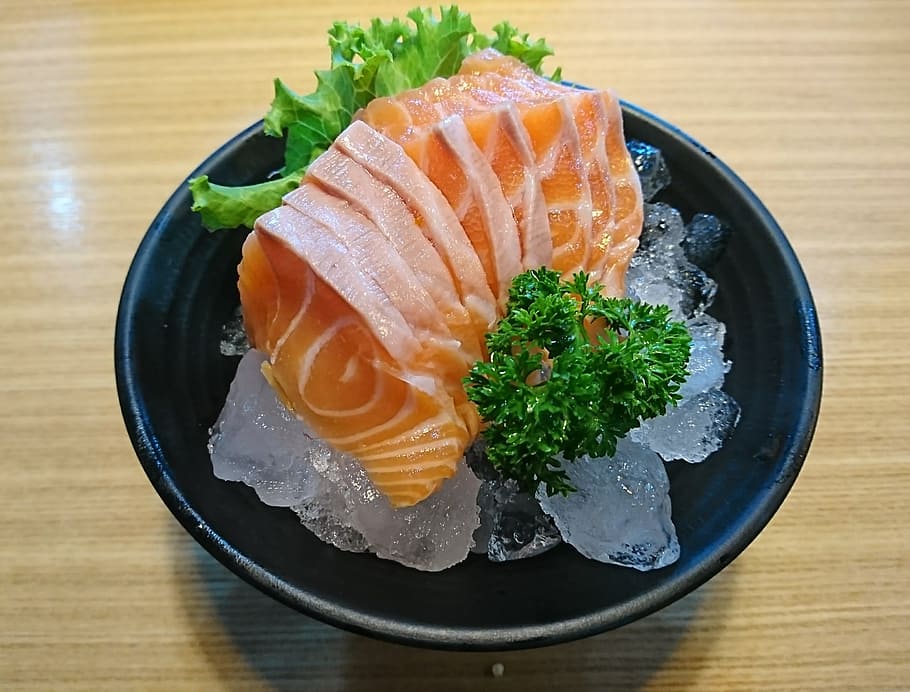 |
| wallpaperflare |
Sashimi - A Delicate Delight from Japan
Sashimi is a traditional Japanese dish that showcases the pristine flavors of raw fish or seafood. With its simple yet elegant presentation, sashimi has become a beloved culinary art form around the world. In this article, we will explore the essence of sashimi, its cultural significance, and provide you with a guide and recipe to create your own sashimi experience.
Sashimi is all about showcasing the freshness and quality of the ingredients. The fish or seafood used for sashimi should be of the highest quality, preferably sushi-grade, to ensure optimal flavor and texture. Popular choices for sashimi include tuna (maguro), salmon (sake), yellowtail (hamachi), and scallops (hotate), among others. It is crucial to purchase the fish from a reputable fishmonger or market that specializes in sushi-grade seafood
Preparing sashimi requires precise knife skills and attention to detail. The fish or seafood is typically sliced into thin, bite-sized pieces, allowing the natural flavors to shine through. The cuts should be made at an angle to maximize the surface area and enhance the texture of the sashimi.
To create your own sashimi experience, here's a simple recipe and guide:
Ingredients:
- Fresh sushi-grade fish or seafood of your choice (such as tuna, salmon, or yellowtail)
- Wasabi (Japanese horseradish)
- Soy sauce (preferably low-sodium)
- Pickled ginger (gari) for palate cleansing
- Optional garnishes: thinly sliced cucumber, radish, or shiso leaves
Instructions:
1. Begin by chilling the fish or seafood in the refrigerator for a few hours before preparing the sashimi. This helps to firm up the flesh and makes it easier to slice.
2. Using a sharp knife, carefully remove the skin (if applicable) and any bones from the fish or seafood. Keep in mind that different types of fish require different cutting techniques. For example, tuna can be sliced across the grain, while salmon is typically cut with the grain.
3. Slice the fish or seafood into thin, uniform pieces. The thickness of the slices may vary depending on personal preference, but a thickness of around 1/4 inch (6 mm) is commonly used.
4. Arrange the sliced sashimi on a chilled plate or platter, taking care to create an attractive presentation. You can garnish the sashimi with thinly sliced cucumber, radish, or shiso leaves for added freshness and visual appeal.
5. Serve the sashimi with wasabi and soy sauce on the side. Wasabi adds a subtle heat and enhances the flavor of the sashimi, while soy sauce provides a salty and savory element. Use small amounts of both, as the focus is on the delicate flavors of the fish or seafood.
6. Accompany the sashimi with pickled ginger (gari) to cleanse the palate between bites. This helps to refresh the taste buds and appreciate the nuances of each slice.
7. Enjoy the sashimi by taking a slice with chopsticks, dipping it lightly in soy sauce and adding a touch of wasabi if desired. Eat it in one bite to experience the harmony of flavors and textures.
Remember, the key to savoring sashimi is to appreciate the natural flavors of the fish or seafood. The simplicity of the dish allows the quality of the ingredients to shine, providing a unique and delightful culinary experience.
Sashimi is a revered Japanese delicacy that embodies the art of simplicity and highlights the natural flavors of raw fish or seafood. By following the guide and recipe provided, you can create your own sashimi experience and embark on a culinary journey that




No comments:
Post a Comment